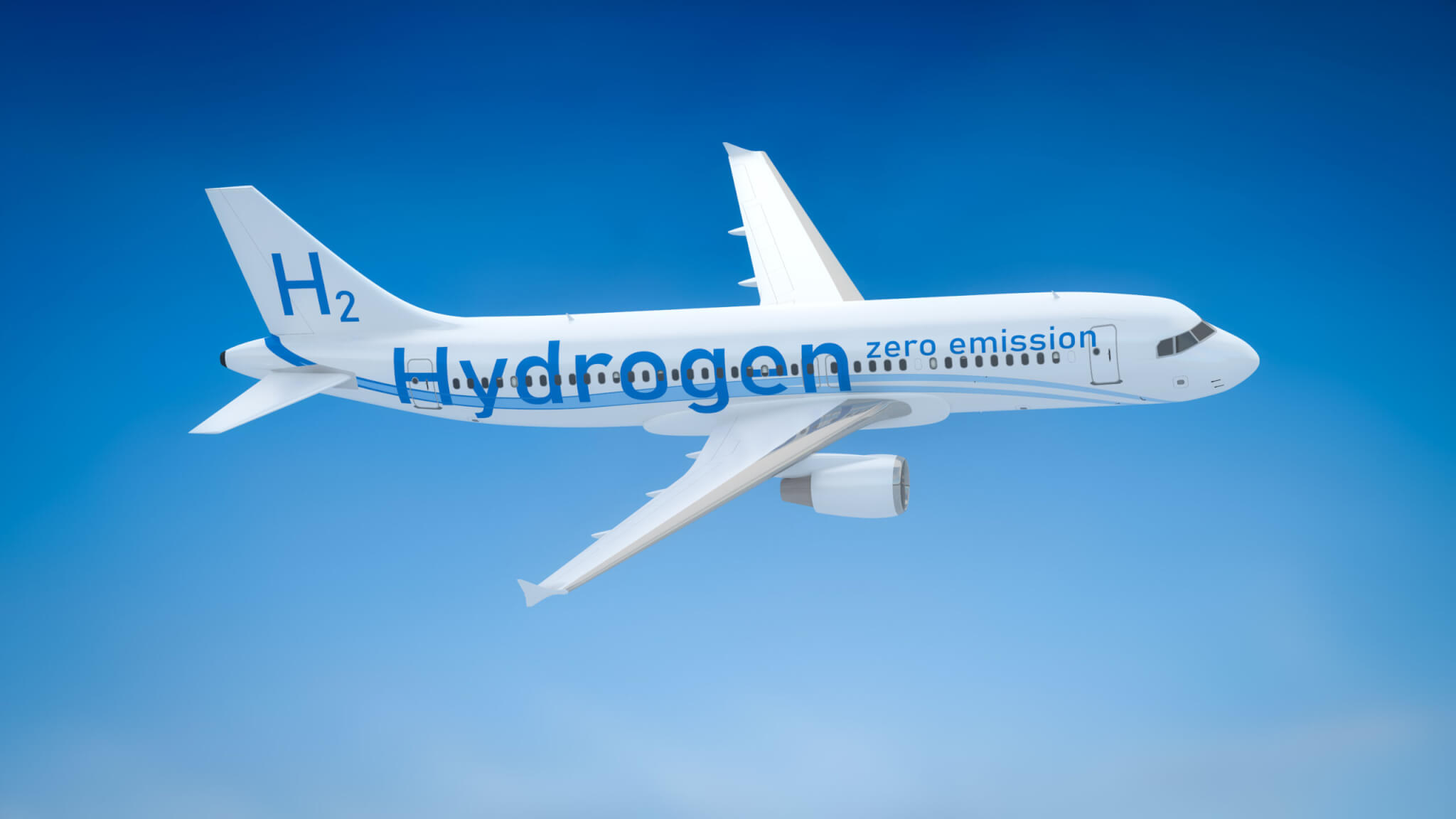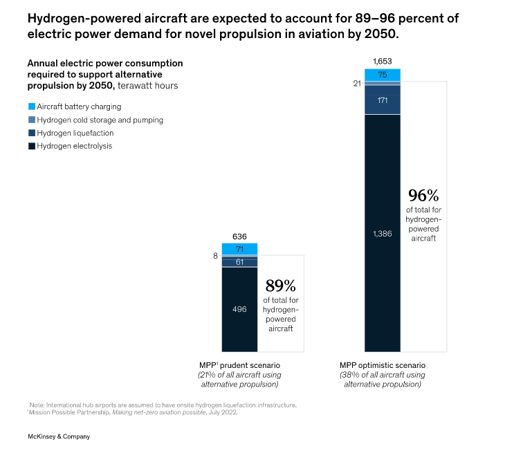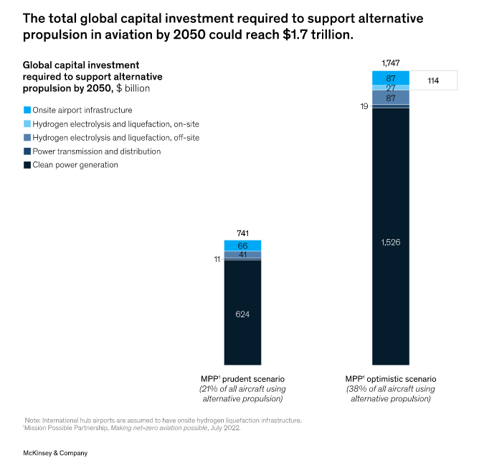Hydrogen-powered aircraft could make up 38% of all aircraft by 2050 reports McKinsey
Hydrogen-powered aircraft could make up 38% of all aircraft by 2050, representing 34% of the sector’s overall energy needs, according to a new McKinsey report.
Alternative propulsion could require between 600 and 1,700Twh-hours of clean energy by 2050, globally, which is equivalent to the energy generated by around 10 to 25 of the world’s largest wind farms or a solar farm the size of Belgium, the report states.
About 89 to 96% of the energy would be used for hydrogen-powered aircraft, while only 4 to 11% would be used to power smaller battery-electric-powered aircraft, such as turboprops, regional jets, and smaller narrow-body aircraft.

For an airport that is a large hub looking to invest in on-site hydrogen liquefaction and charging for battery-electric-powered aircraft, total on-site electricity consumption for terminals, ground support, and other uses could be between 1,250 and 2,450GW-hours per year, which is about five to 10 times more electricity than London Heathrow currently consumes, the report adds.
To meet these demands, airports will need to take steps to upgrade grid connections, local power distribution infrastructure, and their own power stations.
Alternative propulsion will require two new infrastructure value chains. One will involve battery-electric-powered aviation, and the other will be for hydrogen-powered aviation.
These value chains may include many new partners that aren’t currently part of the aviation ecosystem, and they will coexist with the infrastructure required for sustainable aviation fuel and conventional fuel. The sector will need new procedures for energy acquisition, storage, processing, and management, as well as the means to distribute that energy to aircraft.
Most airports have space for hydrogen liquefaction and storage infrastructure but not enough land to generate the clean energy needed to power aircraft via battery-electric and hydrogen means, the report states.
While airports have been touted as possible energy hubs, the scale of energy demand for alternative propulsion will make it extremely difficult to perform all energy production at airports.
For instance, if Paris-Charles De Gaulle Airport is used as an example of a major international hub, it would require approximately 5,800 hectares of solar panels to generate sufficient electricity to meet its demands under Mission Possible Partnership’s prudent scenario. This far exceeds the size of the airport itself, which now occupies 3,300 hectares. Given such significant space requirements, most airports will likely rely on partnerships with other electricity providers within their regional ecosystems to meet them.

An intercontinental hub could expect to invest a total of approximately $3.9bn by 2050 across the whole value chain, including energy acquisition and hydrogen production, while the investment for a major regional airport would be about $1.3bn. “The investments needed to meet 2050 alternative-propulsion-related infrastructure goals must start now,” it warns.

Shifting to alternative propulsion will require a capital investment of between $700bn and $1.7trn across the value chain by 2050. Approximately 90% of this investment will be for off-airport infrastructure, primarily power generation and hydrogen electrolysis and liquefaction.
For hydrogen-powered aircraft, coordination among large and small airports will be needed and represents a bigger challenge. To be successful, airports, operators, and other stakeholders must come together to catalyse action within and across regions.
Airports could acquire sufficient stores of hydrogen and help shape the future of the industry by exploring partnerships with green-energy suppliers for electricity generation and hydrogen production.
Capital expenditures in green-power generation for aviation alone would double the current projections for global airport capital expenditures ($1.68trn by 2040, at $84bn per year). This makes it almost certain that aviation players “will need to form partnerships with companies in other industries, such as energy providers and those in hydrogen-consuming industries, to secure the required investment,” it notes.
The introduction and growth of alternative propulsion within the aviation sector will require significant changes to the current value chains, necessitating huge investment in clean-energy production, airport investment, and coordination across multiple stakeholders within and outside the traditional aviation sector, the report concludes.
“The first changes may occur soon; however, the significant changes resulting from a shift to alternative propulsion will occur gradually, allowing airports and their constituents to prepare accordingly.”






